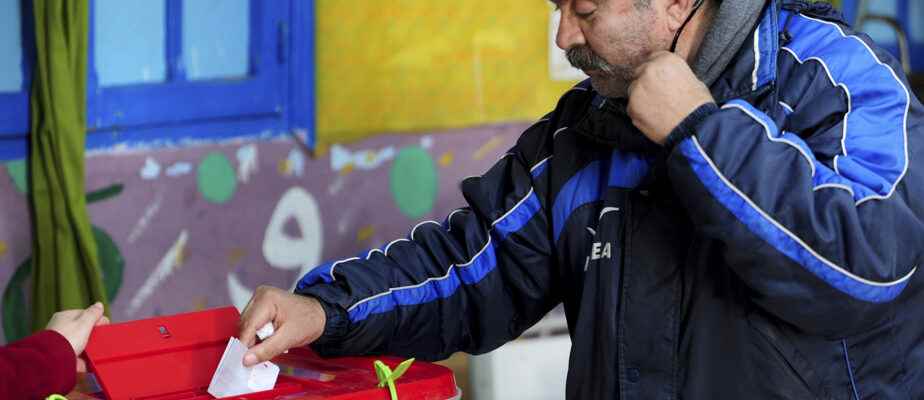(Tunis) The crowd was expected to be weak again on Sunday in Tunisia in the second round to elect a Parliament deprived of real powers, against a backdrop of political divisions since President Saied’s coup, and growing economic difficulties.
Participation is the main issue in these legislative elections after an abstention of nearly 90% in the first round on December 17, a record since the advent of democracy in the cradle country of the Arab Spring 12 years ago.
As of 3 p.m. (9 a.m. EST), turnout stood at “7.73%” out of the 7.8 million registered voters, the chairman of the Isie electoral authority, Farouk Bouasker, announced. , saying he hopes it will increase by the close at 6 p.m., “because Tunisians often vote at the end of the day”.
This ballot for 131 seats (out of 161 deputies) marks the final stage of the reforms imposed for 18 months by President Kais Saied to return to a hyper-presidentialist system, similar to that before the 2011 revolution and the fall of the dictator. Ben Ali.
Deeming the country ungovernable, Mr. Saied seized all powers on July 25, 2021, then revised the Constitution last summer to abolish the hybrid parliamentary system in force.
” Not trust “
Despite election text messages and television debates, experts still predict low attendance.
Divided into three blocs, the opposition, including Ennahdha, the Islamist-inspired party that dominated Parliament over the last decade, is boycotting a ballot which, according to it, illustrates a “dictatorial drift”.
Another demotivating factor: the majority of candidates are unknown and any political affiliation is prohibited.
“I don’t trust the political class. Saied could make a radical change. He […] did nothing,” laments Omrane Dhouib, a 37-year-old abstentionist baker interviewed in Tunis.
Conversely, Belhassen Ben Safta, a 60-year-old taxi driver, voted to “never let the old system (Ennahdha) come back. They are responsible for our misery”.
Crossed in a polling center in Kasserine (south-west), Mokhtar Hermasi, 45, intends to “accomplish (his) electoral duty” despite “a bland campaign”. The head of the electoral office said he saw the participation intensify over the day while noting especially a presence of elderly people.
In Gafsa, a hundred kilometers further south, Mohamed Tlijani and Ali Krimi, two fifties, came to vote for a cousin. “The electoral process has become exhausting, but we want him to win,” said Mr. Krimi.
According to experts, part of the population, sharing Mr. Saied’s aversion to political parties, approves of his limiting the powers of the future parliament. It will be very difficult for him to overthrow the government and it will be impossible for him to dismiss the president.
Plunge in purchasing power
The attention of the 12 million Tunisians is elsewhere.
“I never vote. All economic sectors are suffering and Saied is not interested in it”, denounces Mohamed Abidi, a 51-year-old waiter in Tunis.
Tunisians see their purchasing power plummet with inflation above 10% and face shortages of subsidized foodstuffs such as milk, sugar or oil.
For economists, these shortages are explained by supply disruptions, because the State lacks the cash to pay for these centralized purchases.
Growth is sluggish (less than 3%), unemployment high (more than 15%), poverty is increasing and more than 32,000 Tunisians emigrated illegally last year.
Reason for additional concern: negotiations with the IMF for a loan of 1.9 billion dollars, the key to other foreign aid, have been stalling for months.
The American rating agency Moody’s downgraded the Tunisian debt rating by another notch on Saturday, judging that the risk of non-reimbursement of certain loans was “higher”.
The deadlock in the talks comes, according to experts, from disagreements between President Saied and his government on the program proposed to obtain IMF credit.
Saied, they say, is hesitant to adopt unpopular reforms like lifting commodity subsidies and restructuring over-indebted and overstaffed state-owned enterprises.
